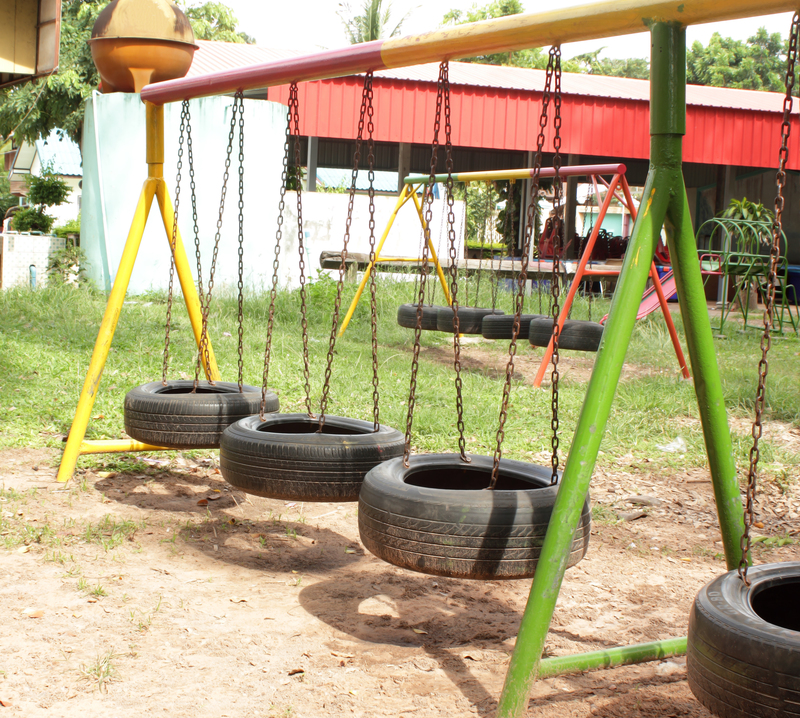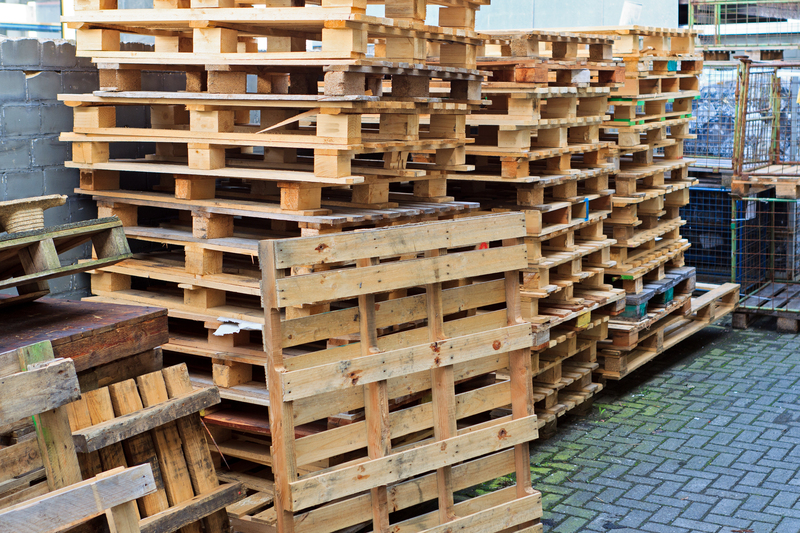Sustainable Methods for Getting Rid of Old Cookware
Getting rid of old cookware doesn't have to mean sending it straight to the landfill. Many of us find our cabinets overflowing with worn-out pots, chipped nonstick pans, or outdated kitchen gear that no longer suits our cooking needs. But did you know that there are a variety of sustainable ways to dispose of old cookware? By choosing eco-friendly options, you can reduce waste, help your community, and even give your cookware a second life. In this article, we'll explore comprehensive, practical, and innovative methods for responsibly getting rid of old cookware.
Why Sustainable Cookware Disposal Matters
The environmental impact of disposing of old cookware is greater than you might think. Most cookware contains materials such as aluminum, steel, copper, ceramics, plastics, and coatings that can take hundreds of years to break down, potentially releasing harmful chemicals into the environment. As awareness of environmental issues grows, sustainable cookware disposal practices have become increasingly important for responsible consumers. Let's dive into the best ways to get rid of old pots, pans, and baking sheets in environmentally-friendly ways.

1. Donate Usable Cookware
The simplest and most impactful method is to give your old cookware a new home. If your pots, pans, or utensils are still functional--no serious warping, dangerous coatings flaking off, or broken handles--they can benefit others.
Where to Donate Used Cookware
- Charity thrift stores: Organizations such as Goodwill, Salvation Army, and local non-profits accept gently used cookware.
- Community shelters or food banks: Shelters, food banks, and transitional housing centers are often in need of functional kitchen items to support individuals or families starting over.
- Online Giving Platforms: Use websites such as Freecycle or Buy Nothing Groups to give away cookware to people in your community for free.
- Religious institutions: Churches, temples, or mosques may take donations for their kitchens or charitable events.
- College campuses: Student unions or housing offices often have programs to provide basic kitchen gear to students in need.
Donating usable cookware is a sustainable cookware disposal method that directly supports your community while cutting down on waste. Make sure to thoroughly clean and inspect items before donation.
2. Recycle Your Old Cookware
When donation isn't an option, recycling is the next best method for eco-friendly disposal. Many types of cookware, including cast iron, stainless steel, copper, and aluminum, are recyclable--though recycling rules and facilities vary by location.
How to Recycle Old Pots and Pans
- Contact your local recycling center: Ask whether they accept cookware and which types of material are eligible. Often, you'll need to drop off items at a designated metal or "scrap metal" recycler.
- Scrap metal yards: Some scrap yards purchase metal cookware--even broken or rusted pieces. They may pay by weight for iron, steel, copper, or aluminum items. Remove any non-metal parts, such as plastic handles or glass lids, before recycling.
- Retailer take-back programs: Certain brands and kitchenware retailers offer take-back or recycling programs for old cookware. For example, some stores accept nonstick pans for recycling during special events.
Important tips for sustainable cookware recycling:
- Nonstick cookware with Teflon or ceramic coatings may not be accepted by all recyclers, due to processing challenges. Check with your facility before dropping off such items.
- Remove all glass, plastic, or rubber from cookware before recycling, as mixed materials complicate processing.
- Old cast iron pans can often be restored and reused. If recycling, ensure they are completely clean and free of food residue.
By choosing sustainable methods for getting rid of old cookware such as recycling, you help conserve natural resources and keep valuable materials out of landfills.
3. Repurpose or Upcycle Your Cookware
Creativity can turn your old kitchenware into something new and useful! Repurposing or upcycling old cookware is both an eco-friendly and fun approach. Here are some innovative ways to reuse old cookware:
- Turn pots into planters: Cast iron skillets, metal stockpots, and even colanders make unique planters for herbs, flowers, or succulents.
- Create garden art or yard decor: Old pans, lids, and utensils can become whimsical garden art--wind chimes, bird feeders, or sculptures.
- Use baking sheets as magnetic boards: Metal baking sheets can become message boards or creative display surfaces for notes, recipes, or photos.
- Storage solutions: Repurpose deep pots as unique storage bins, utensil holders, or catch-alls for garage or craft supplies.
- DIY projects: With a bit of imagination, frying pans can become wall clocks, tiered serving trays, or rustic wall hangings.
When you repurpose old cookware, you're not only reducing waste but also adding a personal and creative touch to your home or garden.
4. Sell or Trade Old Cookware
If your cookware is still in decent shape but no longer fits your needs or style, selling or trading it is an excellent--and sustainable--option. This extends the product's useful life and keeps it out of the landfill.
Where to Sell or Trade Used Cookware
- Online marketplaces: Post items on Facebook Marketplace, Craigslist, eBay, or OfferUp. Vintage or high-quality cookware can fetch a surprising price!
- Consignment shops: Kitchenware and home goods stores may accept gently used cookware, especially if it's a recognized brand.
- Bartering or swaps: Participate in local swap events or exchange groups to trade cookware for items you need.
By selling or trading your used cookware, you not only practice sustainable disposal but also help someone else reduce their environmental impact by buying secondhand.
5. Special Disposal for Nonstick and Specialty Cookware
Some types of cookware--especially nonstick pans with Teflon or PTFE coatings, ceramic-coated cookware, and items with composite materials--may require special handling.
Steps for Disposing of Specialty Cookware Responsibly:
- Check with local hazardous waste facilities: Some nonstick coatings can release toxic fumes if incinerated or improperly processed, so it's essential they are handled by appropriate facilities.
- Manufacturer or retailer programs: Certain brands will take back their product for recycling or safe disposal, particularly if you're buying a replacement from them.
- Remove non-metal parts: Separate plastics and other materials for proper recycling or disposal.
If you are unsure about your specific type of cookware, contact your local municipality or waste provider. Never burn or incinerate cookware, as this can release hazardous fumes.
6. Restore and Reuse Cast Iron and Stainless Steel Cookware
High-quality materials like cast iron and stainless steel deserve a second chance. With proper care, these types of cookware can last decades--and restoring them is a much more sustainable solution than disposal.
How to Restore Old Cookware
- Cast iron: Remove rust with steel wool or a scrub brush, then re-season with oil and bake in the oven.
- Stainless steel: Use a non-abrasive cleaner to remove stains, restore shine, and polish away discoloration.
- Replace handles or knobs: Many cookware brands sell replacement parts, making it easy to fix broken pieces rather than discard the entire item.
If you're not interested in restoring it yourself, consider passing it to someone who enjoys kitchen restoration or check if your local cookware store offers restoration services.
7. Avoiding Unsustainable Disposal Methods
What not to do with your old cookware:
- Do not throw coated or plastic cookware in standard recycling bins without checking local rules.
- Never put pans with nonstick or ceramic coatings in curbside recycling; the coating contaminates recycling streams.
- Do not burn or incinerate cookware--this releases dangerous chemicals.
Following these guidelines ensures you avoid environmentally damaging disposal methods and help move towards a more sustainable future.
8. How to Reduce Cookware Waste in the Future
Practicing sustainable cookware disposal today is part of a larger journey toward a zero-waste kitchen. Here's how you can minimize cookware waste going forward:
- Choose high-quality, long-lasting products: Invest in well-constructed cookware that will last for years, reducing the frequency of replacements.
- Avoid nonstick coatings: Opt for stainless steel, cast iron, or copper, which are more durable and easier to recycle.
- Research repairability: Select cookware brands that offer easy repairs, replacement parts, or take-back programs.
- Buy secondhand: Purchasing pre-owned cookware extends its lifecycle and keeps products circulating in the community.
- Educate friends and family: Sharing knowledge about sustainable cookware disposal encourages others to make eco-friendly decisions.

Frequently Asked Questions About Sustainable Cookware Disposal
Can I put old pots and pans in the recycling bin?
Most curbside recycling programs do not accept cookware due to mixed materials and size restrictions. Instead, bring metal cookware to scrap metal yards or inquire at local recycling centers.
Is it safe to donate nonstick pans?
Yes, if they are in good condition and the coating is intact (not flaking or scratched). If the coating is damaged, recycling or proper disposal is a better option.
How do I know if cookware is recyclable?
Metals like cast iron, steel, copper, and aluminum are generally recyclable. Always remove non-metal parts and check with your local recycling facility.
Are there eco-friendly cookware brands?
Absolutely! Many modern cookware brands now offer products made from recycled materials, promote take-back recycling programs, and use sustainable manufacturing practices. Be sure to look for third-party sustainability certifications.
What should I do with broken glass lids?
Glass cookware and lids are typically made from tempered glass, which most recycling centers do not accept. Some specialized facilities may recycle this glass, but otherwise, wrap and dispose of it in your regular waste if there's no local option.
Conclusion: Making a Difference With Sustainable Cookware Disposal
Thoughtful, sustainable methods for getting rid of old cookware have a real and lasting impact on the environment and your local community. Whether you donate, recycle, upcycle, sell, or restore your kitchen items, each action contributes to a greener future and reduces unnecessary waste. The next time you update your kitchen, remember these eco-friendly solutions for your old pots, pans, and utensils--and share these sustainable cookware disposal tips with others. Every step counts in building a more sustainable, kitchen-friendly world!